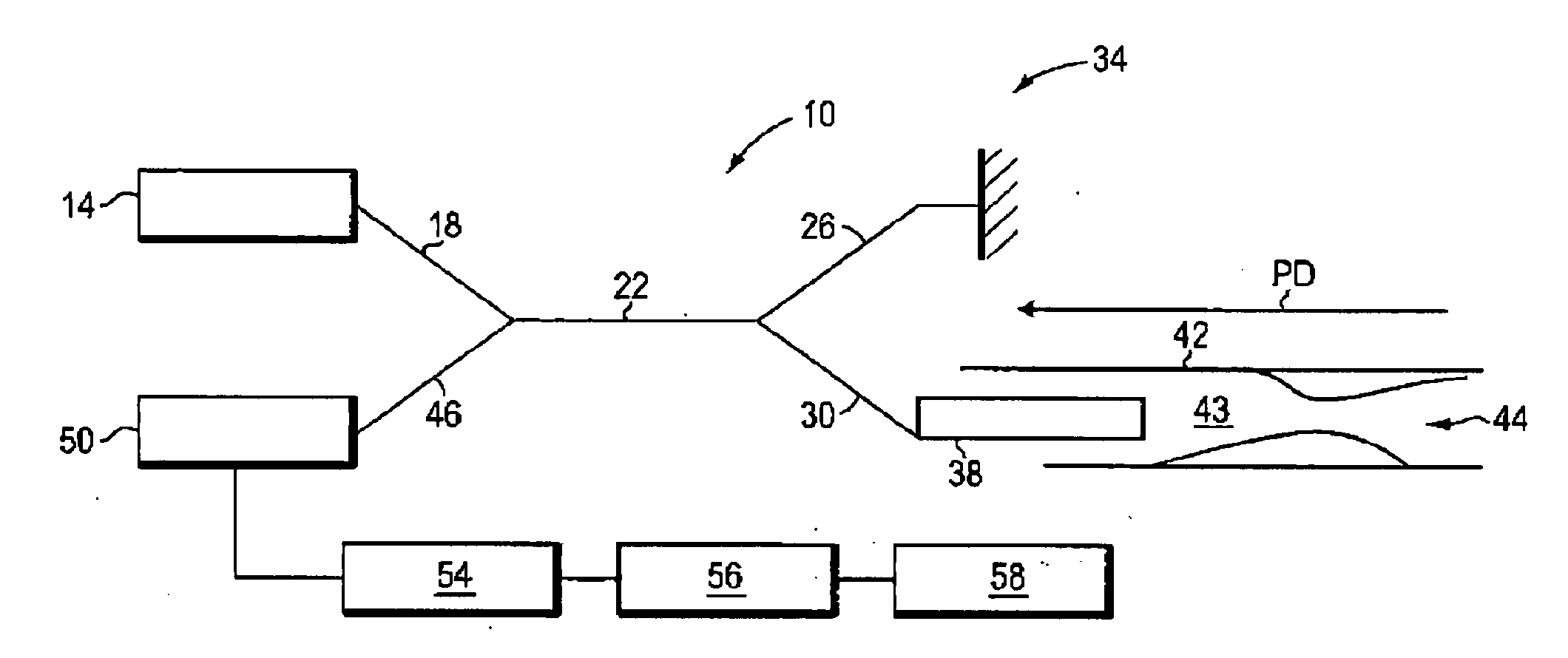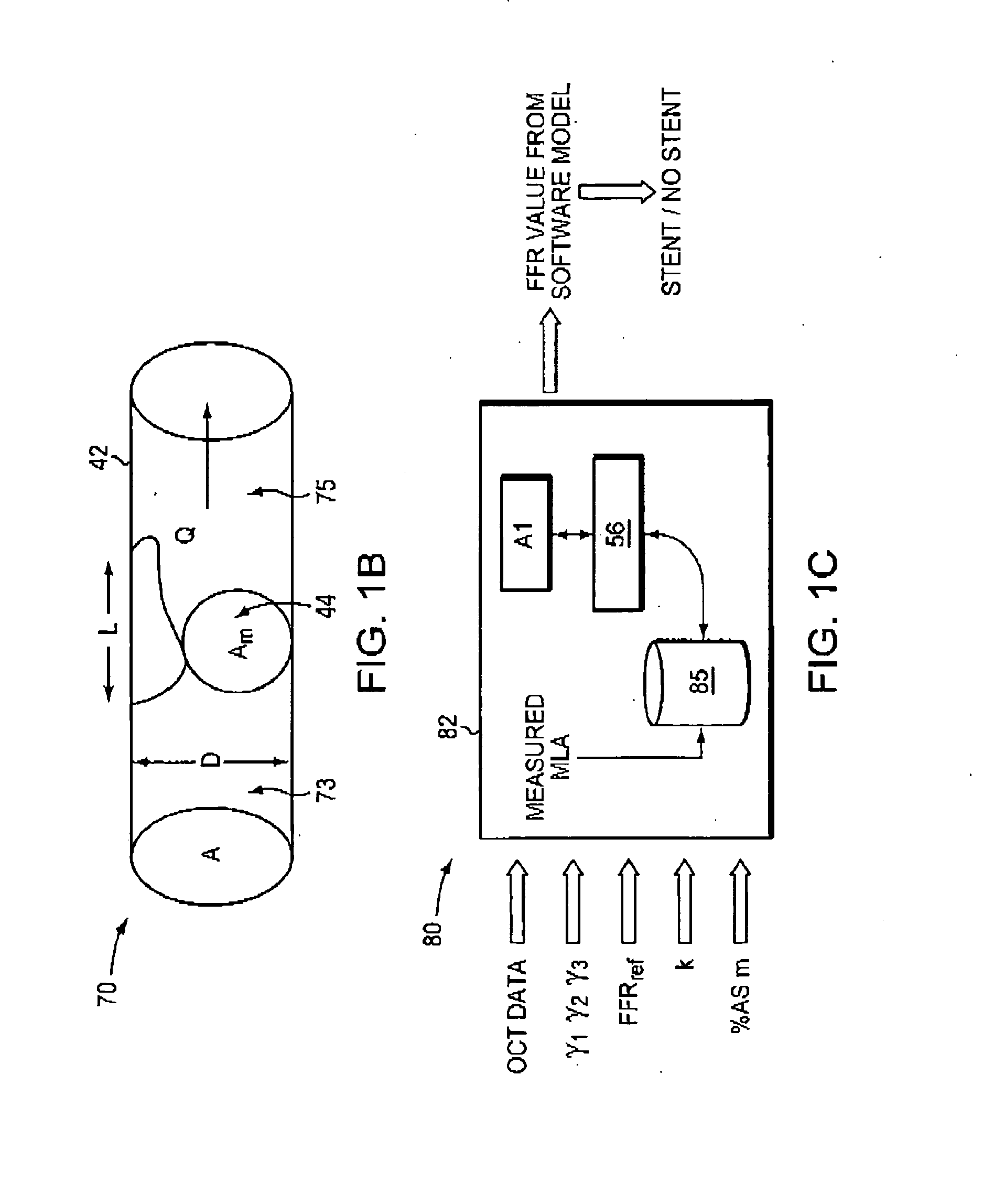Systems, methods and apparatus for determining a fractional flow reserve
a fractional flow and system technology, applied in the field of systems, methods and apparatus for determining fractional flow reserves, can solve the problems of inability to relate mla, failure to achieve simple linear regression and curve fitting of experimental data, and inability to be compelling
- Summary
- Abstract
- Description
- Claims
- Application Information
AI Technical Summary
Benefits of technology
Problems solved by technology
Method used
Image
Examples
Embodiment Construction
[0042]In part, the invention relates to systems, method and apparatuses that can determine, generate or evaluate a fractional flow reserve (“FFR”) value such as a measured, estimated, modeled or approximated FFR value using a minimum lumen area (“MLA”) value such as a measured, estimated, modeled or approximated MLA value. Specifically, a MLA value can be obtained by interferometrically measuring a blood vessel and processing one or more OCT data sets that include a stenotic region and regions to either side of such as stenotic region. Accordingly, in one embodiment, a FFR value is obtained using an optical data collection method and system instead of a pressure data collection method and system. In the field of interventional cardiology, parameters such as MLA and FFR values are used to assess blood vessel conditions and cardiovascular performance. These values can be determined using pressure sensors, angiography, MRI, and other data collection modalities.
[0043]In part, one embodi...
PUM
| Property | Measurement | Unit |
|---|---|---|
| lumen area | aaaaa | aaaaa |
| diameters | aaaaa | aaaaa |
| optical coherence tomography | aaaaa | aaaaa |
Abstract
Description
Claims
Application Information
 Login to View More
Login to View More - R&D
- Intellectual Property
- Life Sciences
- Materials
- Tech Scout
- Unparalleled Data Quality
- Higher Quality Content
- 60% Fewer Hallucinations
Browse by: Latest US Patents, China's latest patents, Technical Efficacy Thesaurus, Application Domain, Technology Topic, Popular Technical Reports.
© 2025 PatSnap. All rights reserved.Legal|Privacy policy|Modern Slavery Act Transparency Statement|Sitemap|About US| Contact US: help@patsnap.com



